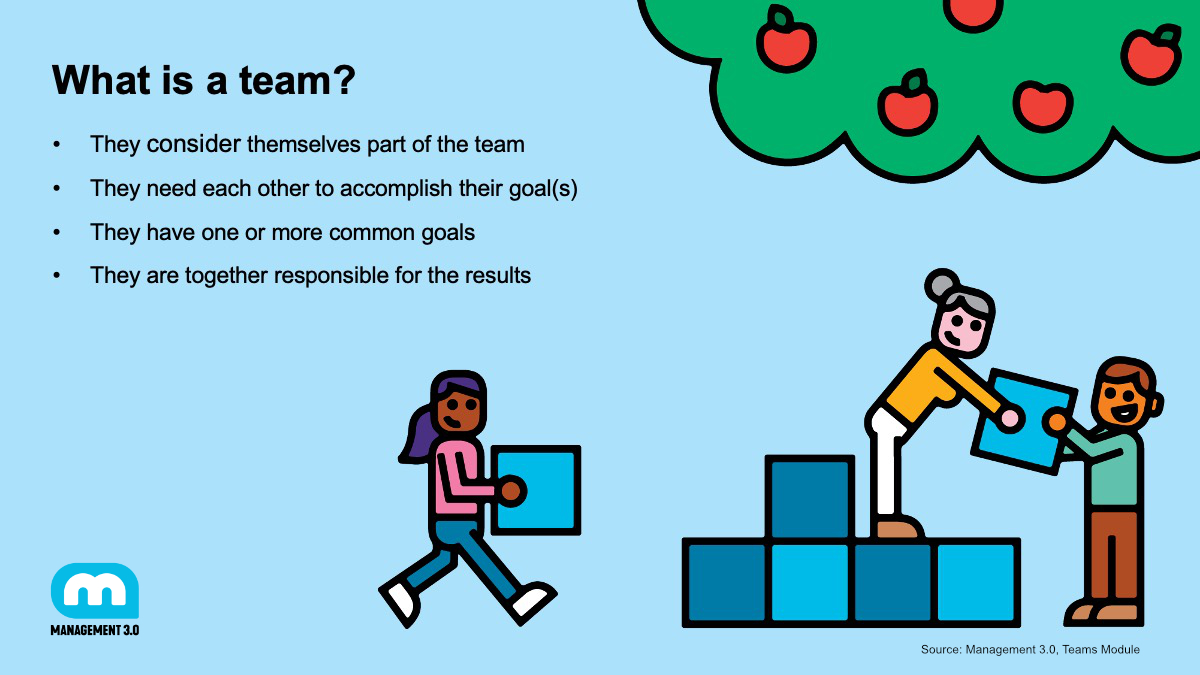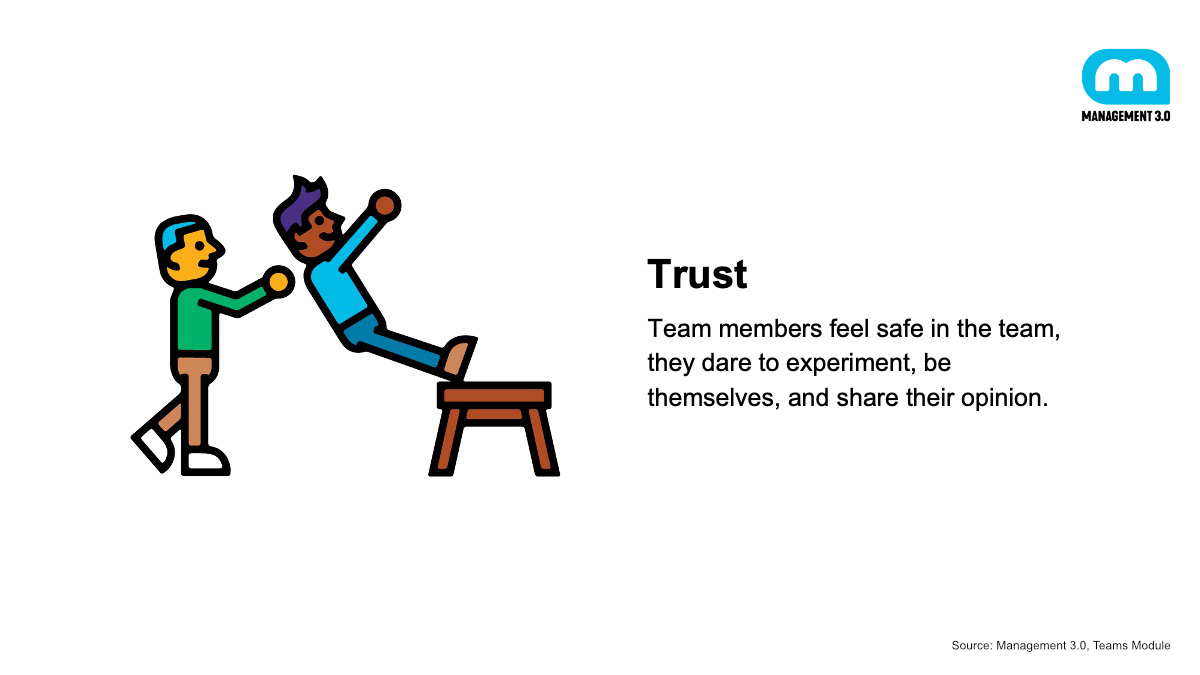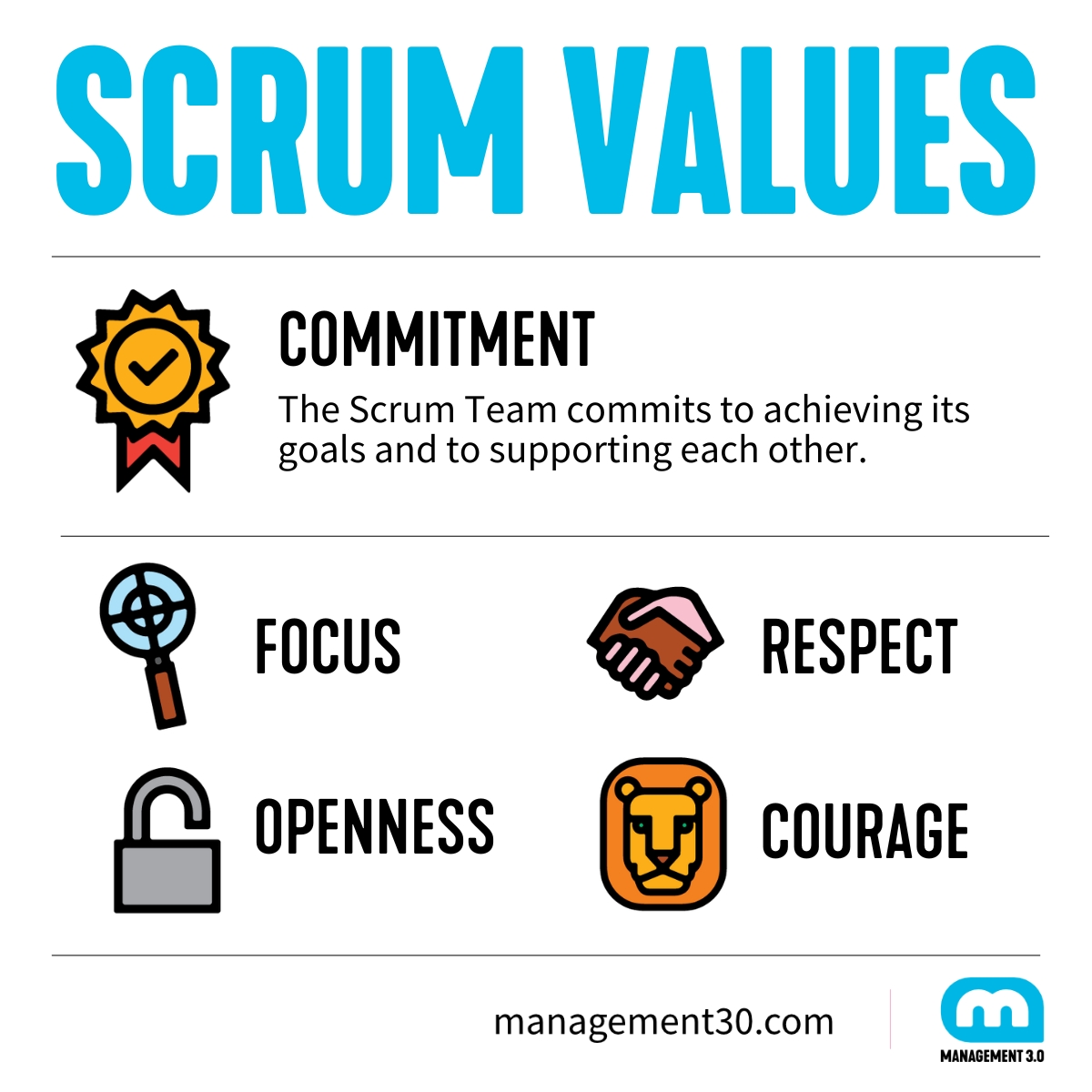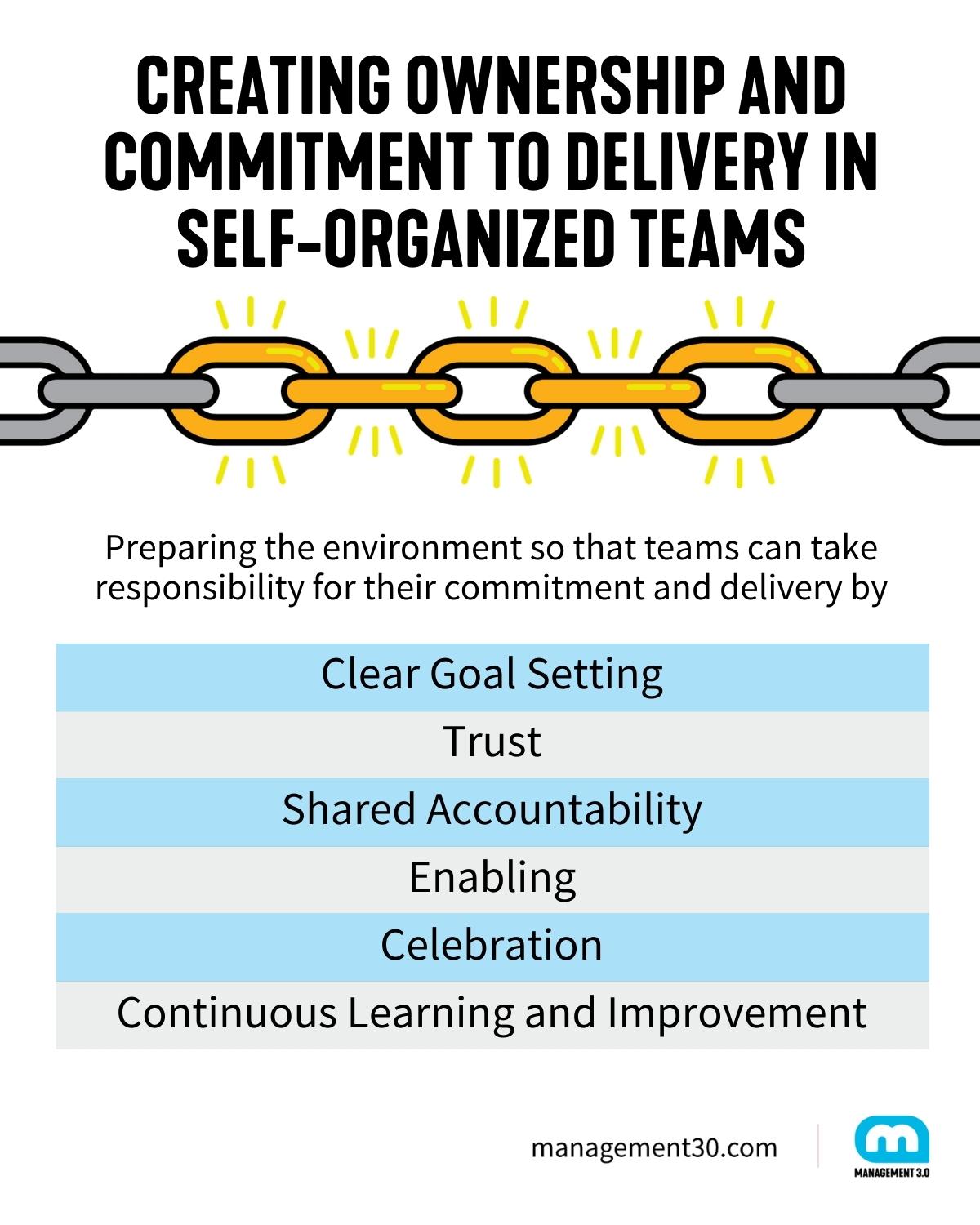Self-organized teams empower individuals to collaborate, make decisions, and manage their own work. They foster creativity, agility, and accountability, leading to increased productivity and innovation. In today’s dynamic and complex work environment, self-organized teams enable adaptability, rapid problem-solving, and better employee engagement, driving overall organizational success. Management 3.0 Facilitator Markus Schmitz discusses how to create ownership and commitment to delivery in self-organized teams.
When was the last time you joined a sprint review, and you left it unsure about what was shown and why? Each of us has probably had that experience once in a while, leaving us with more questions than answers:
- Is that really what the team aimed for?
- What did they commit to when starting the sprint?
- Was there a shared understanding of what outcomes they were looking for?
- Was there shared accountability in achieving the goal?
- How does that provide value to the customer?
All these questions usually take work to answer, and you need to look at topics from different perspectives as self-organized teams are highly complex organisms in which many things can go wrong.
You also cannot enforce delivery and commitment to the teams, but, by setting the right environment, you increase the chance that something extraordinary will emerge.
So what does it take to achieve full ownership within a self-organized team? How can you manage to achieve great results for customers? Let us look at how to prepare the proper environment and at how Management 3.0 practices can help us with that.
In today’s dynamic and fast-paced business landscape, self-organizing teams have become a powerful approach to fostering innovation, collaboration, and agility. These teams are characterized by their ability to make autonomous decisions, take ownership of their work, and commit to delivering exceptional results. However, creating a culture of ownership and commitment within self-organized teams requires intentional efforts from leaders and team members.
What is commitment in Agile?
Commitment refers to the dedication and accountability of the Agile team to fulfill the objectives and goals set for a particular iteration or sprint. It involves the team members’ agreement and active participation in delivering the agreed-upon scope of work within the specified time frame.
Create ownership and commitment to delivery in self-organized teams through clear goal setting
A common set of goals is one of the prerequisites for becoming a team. When knowing what to strive for, it becomes more likely to gain a commitment.

When reviewing the scope of a sprint, sprint planning often looks like this: The Product Owner brings a set of stories, (in the worst case, even unrelated ones), explains each of them in a few words, asks the team to commit to them and, in the best case, spends a few minutes thinking about how to combine that set of stories into one goal and… off we go. Sprint started.
Sound familiar?
No wonder you rarely see great outcomes in the sprint review in an environment like that.
It is crucial to establish clear and well-defined goals. Involving team members in the goal-setting process and allowing them to contribute their insights and perspectives is vital. When team members clearly understand the desired outcomes, they are more likely to take ownership and feel a sense of responsibility toward achieving them. You can also profit a lot from shared expertise and the crowd’s wisdom, and this gives teams far more flexibility to accomplish the goal in a complex environment with an unclear beginning.
How can we improve the approach to sprint planning?
In my experience, a great approach is not bringing a single story to the planning, but using storytelling to start the discussion about what problem we want to solve for our customers. Why is that a problem? Who is our customer? All of this information will help the team to understand and develop tailor-made solutions for the customer, rather than following the criteria of a ticket. I need to quote Jeff Paton in his excellent book User-Story-Mapping in order to explain the need for stories when defining goals: “Stories aren’t a written form of requirements; telling stories through collaboration with words and pictures is a mechanism that builds shared understanding.”
Why self-organizing?
The whole idea behind self-organizing teams is to bring the decisions to those who know best because they know the context and the customer so they have the expertise to make a decision. Self-organized teams thrive when they are given autonomy to make decisions. Encourage team members to take ownership of their work by empowering them to make decisions related to their tasks and projects.
Providing guidelines and boundaries is essential to make it easy for them to navigate, but allow flexibility for creativity and innovation with those boundaries. When team members are free to make choices and decisions, they feel a greater sense of ownership and accountability for outcomes.
By playing Delegation Poker you can clearly define those boundaries and the level of decision-making within the team while establishing trust. Make the team feel safe because they know who to rely on in the area they currently feel less comfortable with.
Create ownership and commitment to delivery in self-organized teams through trust
Much research (e.g. the Aristoteles project from Google) has shown that trust is the foundation of ownership and commitment within self-organized teams. Researchers found that what mattered was less about who was on the team and more about how the team worked together, where psychological safety was important.

What does it take to build a high-performing team? With our Agile Team Leadership Workshop you will be enabled to better serve your team as a leader, set up the right conditions for self-organization, and foster growth for both the team members and the team as a whole.
Therefore, cultivating a culture of trust is essential to fostering open communication, active listening, and respect among team members. Encourage constructive feedback and create an environment where mistakes are viewed as learning opportunities rather than failures.
Patrick Lencioni, in his book The Five Dysfunctions of a Team, demonstrated the relatedness between trust and delivery of results. When team members feel psychologically safe, have full trust, and have open conversations about their conflicts, they are more likely to take ownership, share ideas, and commit to the team’s collective success.
Create ownership and commitment to delivery in self-organized teams through shared accountability
Ownership and commitment are not just individual responsibilities – they extend to the entire team. Foster a collaborative environment in which team members support each other, share knowledge, and work together towards common goals.
In this regard, the team daily typically provides you with an excellent overview of how the team is doing. Is everybody sharing the information about “his/her” ticket, or is the team discussing how to take the next step to reach the goal together?
“Accountability can be given, asked, requested, but it cannot be pushed or forced.” This is a very true statement, and leaders need to encourage a sense of shared accountability so that team members hold each other responsible for their commitments. When team members feel connected and accountable to one another, they are more likely to take ownership and go the extra mile to deliver results.
Why is sprint commitment important?
Sprint commitment provides focus, accountability, and predictability, while facilitating collaboration, learning, and value delivery. It supports the Agile principles of transparency, adaptation, and customer satisfaction.
Create ownership and commitment to delivery in self-organized teams through enabling
We often talk about the need for empowering, however, enabling is sometimes forgotten, though it does not mean it is less important.
In today’s environment, we rely highly on the existence of the resources, tools, and support the team needs to be successful. Ensuring team members have access to the right technology, training, and development opportunities is key. Still, the so-called “soft skills” are a must-have nowadays to deliver great results. Therefore, it is vital to offer coaching and mentoring to help teams overcome challenges and enhance their skills. I have had mainly positive experiences, not just enabling colleagues to promote their expertise, but also in providing the support of a system coach. When team members feel supported and equipped to excel in their roles, they are more likely to take ownership and deliver high-quality outcomes.
Who owns the sprint commitments?
The team, including all its members, shares the responsibility for fulfilling the commitments made for a specific sprint. This concept aligns with the principle of self-organizing teams and promotes a sense of shared ownership and collaboration.
Within the Agile team, each team member has a role to play in meeting the sprint’s commitments. The Scrum Master facilitates the process and ensures that the team is adhering to Agile principles and practices. The Product Owner collaborates with the team to define and prioritize the work items or user stories that form the sprint commitments. The Development Team, comprising developers, testers, designers, and other relevant roles, takes responsibility for implementing and delivering the committed work.

Create ownership and commitment to delivery in self-organized teams through celebration
Recognition is a powerful motivator for ownership and commitment. It will help the team to grow and strive for common goals. Using Kudo Cards is one way to acknowledge and celebrate individual and team achievements to reinforce a culture of ownership and delivery. Remember to highlight success stories and publicly recognize the contributions of team members.
In our Agile Team Leadership Workshop you will learn how to actively influence by creating a self-organized, high-performing team. You will learn how to set up a healthy feedback culture based on openness and transparency within your team, how to achieve cohesion within and across your team, and how to implement a system to support increased team happiness to boost performance and productivity.
Create ownership and commitment to delivery in self-organized teams through Continuous Learning and Improvement:
Avoid only celebrating success; celebrate learnings. To achieve the psychological safety environment it is important to celebrate learning. Taking calculated risks and learning from them is essential to innovation and great customer outcomes.
Provide opportunities for reflection and retrospection, so that team members can identify areas for improvement and implement changes. Implementing changes: this is key. There is often no outcome in retrospectives, and if there is, people rarely act upon it.
Treating these improvements as top-tier priorities and ensuring the team takes care of them in the next sprint is vital to improving the team, its interactions, and the environment. Encourage experimentation and innovation, allowing team members to take calculated risks and learn from failures. When learning and improvement are valued, team members feel empowered to take ownership and drive positive change.

Let us return to the beginning and to the trigger of this story:
the unpleasant sprint review. It is quite easy to point out that something is wrong, but it is pretty hard to drill down and get to the root cause of the challenge… and there might be many of them.
Preparing the environment so that teams can take responsibility for their commitment and delivery has many facets, and it is up to everybody working with the team to get to know about their struggles and support them. The support of many is needed to set the proper conditions for effective leadership, goal setting, trust, collaboration, and much more.
It is not always easy but it is always worth it, as we are all looking for the great results that only self-organized teams can provide.
Keep in mind:
- When knowing what to strive for, it becomes more likely to gain a commitment.
- When team members feel psychologically safe, have full trust, and have open conversations about their conflicts, they are more likely to take ownership, share ideas, and commit to the team’s collective success.
- When team members feel connected and accountable to one another, they are more likely to take ownership and go the extra mile to deliver results.
- When team members feel supported and equipped to excel in their roles, they are more likely to take ownership and deliver high-quality outcomes.
- When individual and team achievements are acknowledged and celebrated, a culture of ownership and delivery is reinforced.
- When learning and improvement are valued, team members feel empowered to take ownership and drive positive change.

